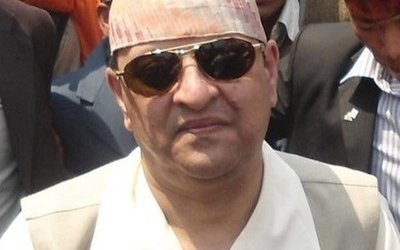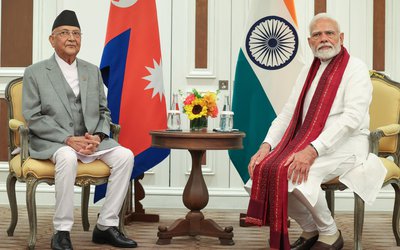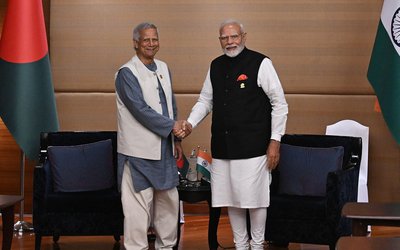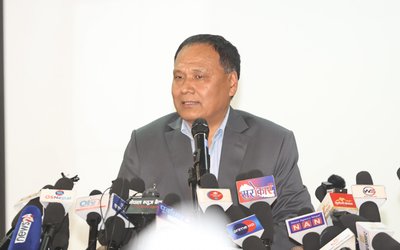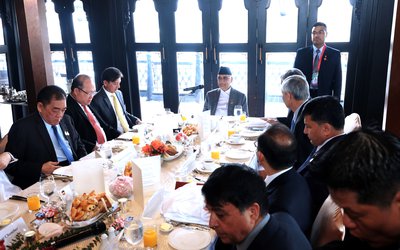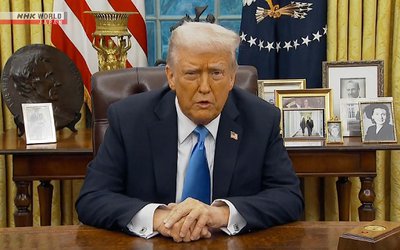
These days economics do make as much a big headline as politics. Global economic issues do influence, sometimes even shape, global political issues. No wonder that Malaysian Prime Minister Mahathir Mohammad’s speech at a Business Conclave in Kathmandu last month grabbed the headlines. Hailed as the father of modern Malaysia, the dynamic Mahathir shared his experiences of more than two decades in developing Malaysia during which the country scaled new heights. He spoke on how Nepal, which in many ways is similar to Malaysia, can learn from its success story.
Mahathir’s development tips for Nepal were undoubtedly very enlightening. But, although the two countries have a lot of similarities, Nepal still has a long way to go before it can finally work on Mahathir's prescription.
The Malaysia of 1960s and the present day Nepal face similar problems; high levels of poverty, ethnic strife and a weak manpower. More than half of the population in poverty. In Malaysia, the ethnic conflict was so severe that it even triggered a Sino-Malay sectarian violence in 1969. Illiteracy was widespread and there was a huge deficit of skilled manpower.
But the similarity ends there. One of the major differences between the two countries is the nature of geo-political realities that the two countries face in their respective regions. While Nepal lies sandwiched between two emerging superpowers, the island nation on the other hand remained free from any such shackles. Although there were foreign interventions like the Indonesian-backed communist insurgency in Sarawak, mainly involving elements of the local Chinese community, Malaysia was devoid of external pressures from neighboring countries when it came to internal decision making. With mounting influence from both the sides of its border, it might not be easy for Nepal to adopt the Malaysian formula as swiftly and independently. Absence of geopolitical rivalry in its neighbourhood meant that Malaysia was free from any sort of proxy war of the outsiders, something that has been historically associated with the Nepalese politics since time immemorial.
Mahathir talked about how industrialization played a vital role in Malaysia’s development. He stressed on the fact that Nepal should pave the way for Foreign Direct Investments (FDIs). However, scenario between the two countries should be looked at before jumping into the FDI debate. At the time of independence Malaya had great economic advantages. They had the economic legacy left by the British. It was among the world’s leading producers of three valuable commodities: rubber, tin, and palm oil. It was also a significant iron ore producer. These export industries gave the Malayan government a surplus to invest in industrial development.
Despite being largely dependent on agriculture, Nepal’s agriculture sector does not account for a big share of the GDP. Its contribution still stands at a mere 38% . Much of the agriculture produce are for domestic consumption rather than export. Much of the raw materials of industries do come from agriculture.
But with the crucial agriculture sector not providing economic advantage the industrialisation remains a pipedream for Nepal.
Mahathir talked how a stable system is necessary for economic prosperity for the nation. “It is unstable politics which stands in the way of economic development”, he said. Post the country's independence the party he started with and later went to head it did everything to ensure stability in Malaysia. The strong headed leader himself ruled with an iron fist for more than two decades to maintain this stability. This 'stability' is said to have led to a better economy to establish Malaysia as one of the Asian tigers. Unfortunately, political instability has consistently characterized Nepali politics ever since the modern Nepal came into being some two and a half centuries ago.
- Ukrainian Crisis And The World (Dis)Order
- Apr 22, 2022
- China’s Cautious Steps In The Graveyard Of Empires
- Aug 18, 2021
- Foreign Aid On The Fence!
- Aug 08, 2021
- Communist Party of China centenary celebrations Reading between the lips
- Jul 14, 2021
- Second Wave Of Covid-19 In India: Deadly Blow To The Economy
- Jun 23, 2021



